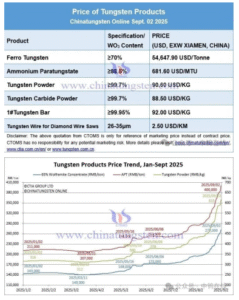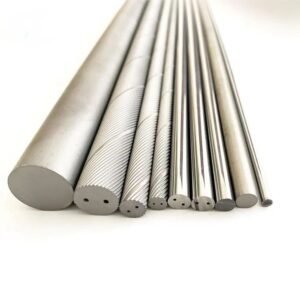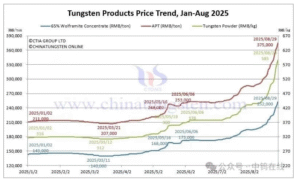Choosing the correct milling insert is crucial to achieving optimal performance, efficiency, and cost-effectiveness in machining. The right insert depends on several factors, including the material being machined, the type of milling operation, and the desired surface finish. Here's a comprehensive guide to help you choose the correct milling insert:
1. Understand the Material to be Machined
The material you're working with directly influences the insert's performance. Different materials require inserts with specific properties to achieve optimal results.
- Steel (Mild, Alloy, Stainless Steel):
- Use inserts with a positive rake angle for softer steels and negative rake angles for harder steels and high-alloyed steels.
- Cermet or CVD-coated carbide inserts are typically best for stainless steel, offering both hardness and wear resistance.
- Cast Iron:
- Inserts with a tougher substrate (e.g., PVD-coated carbide) are good for cast iron to withstand wear from abrasive particles.
- Negative rake angle inserts are commonly used due to the high cutting forces and abrasion from cast iron.
- Non-Ferrous Metals (Aluminum, Brass, Copper):
- Positive inserts with high rake angles are suitable, as they help reduce cutting forces and improve chip control.
- Coated carbide inserts are preferred for aluminum, while PVD-coated inserts work well for copper and brass to avoid sticky chip buildup.
- Exotic Materials (Titanium, Inconel, etc.):
- Use high-performance coated inserts (e.g., CVD or PVD coatings) for these materials due to their high heat resistance.
- Negative rake angle inserts are often preferred due to the aggressive cutting forces and heat generation.
2. Choose the Correct Insert Geometry
The insert's geometry refers to the angles, shape, and design that affect its cutting behavior. The key factors to consider are:
- Rake Angle:
- Positive rake angle: Reduces cutting forces and provides a smooth surface finish. Ideal for softer materials like aluminum.
- Negative rake angle: Increases tool strength and durability, ideal for harder, tougher materials and high-roughing applications.
- Cutting Edge Radius:
- Sharp edge: Best for fine finishing operations where a high-quality surface finish is essential.
- Round edge: Suitable for roughing or heavy material removal, as it improves insert toughness and minimizes chip deformation.
- Insert Shape:
- Square, triangle, or round: Different shapes suit different types of milling operations. Round inserts are often used for generalized operations, while square and triangular inserts are great for specific tasks like face milling, slotting, or contour milling.
- Chip-breaker design: Inserts with chip-breakers (notches or specific grooves) are excellent for controlling chip flow and preventing excessive buildup, especially in roughing operations.
3. Consider Coating and Substrate
Inserts are often coated to enhance wear resistance, reduce friction, and improve performance under specific cutting conditions.
- CVD (Chemical Vapor Deposition) Coatings:
- Ideal for high temperatures and wear conditions, such as machining stainless steel or high-temperature alloys.
- Excellent for tough, abrasive materials like cast iron and hardened steel.
- PVD (Physical Vapor Deposition) Coatings:
- Provides superior hardness and wear resistance at lower temperatures.
- Ideal for machining aluminum, brass, and non-ferrous metals.
- Uncoated Inserts:
- Used for light machining operations or when the material being cut is not abrasive.
- Substrate Material:
- Carbide is the most commonly used substrate for milling inserts due to its hardness and wear resistance.
- Cermet or high-speed steel (HSS) inserts are sometimes used for specific applications, such as precision milling or machining heat-sensitive materials.
4. Milling Type and Operation
Different types of milling operations require different inserts. Here’s how to match the insert to the operation:
- Face Milling:
- Round inserts are often used in face milling operations for their ability to engage the workpiece evenly.
- Insert Geometry: Choose inserts with larger cutting radii for rough milling and smaller radii for fine finishing.
- End Milling:
- Square or rectangular inserts are typically used for end milling, offering excellent strength and cutting stability.
- Radial clearance: Choose inserts with higher radial clearance for deeper cuts.
- Slotting:
- Insert shape: Triangular or square inserts work well for slotting applications, as they can maintain cutting stability and manage chip removal.
- Profile Milling:
- Specialized inserts with specific chip-breaking features or customized geometries can be used to achieve the desired profile and surface finish.
- High-Speed Milling:
- Fine-grain carbide inserts with PVD coatings are preferred, as they offer superior heat resistance and wear resistance at higher speeds.
5. Cutting Parameters (Speed, Feed, Depth of Cut)
When selecting an insert, you should always consider the cutting parameters:
- Cutting Speed: Higher cutting speeds generally require inserts with better heat resistance (CVD or PVD coatings).
- Feed Rate: If you're using a higher feed rate, inserts with stronger cutting edges (negative rake, thicker substrates) will help handle the increased forces.
- Depth of Cut: Deep cuts will generate more heat and force, so negative rake inserts with coatings are better suited to handle these conditions.
6. Tool Life and Cost Considerations
- Tool Life: While negative rake angle inserts tend to have a longer tool life due to their durability, positive rake angle inserts may wear faster, especially when used for tougher materials. It’s essential to balance tool life against production requirements.
- Cost: Coated inserts, especially with CVD or PVD coatings, tend to be more expensive, but they often provide a better cost-to-performance ratio in high-volume operations or for tougher materials. Uncoated inserts or those with more basic coatings may be sufficient for light cutting tasks at a lower cost.
7. Quality and Brand
Lastly, it's important to consider the reputation and reliability of the insert manufacturer. Established brands often offer higher-quality inserts with better consistency, resulting in fewer tool changes and better machining results.
Key Takeaways
- Material Type: Match the insert material and coating to the workpiece material.
- Insert Geometry: Choose the appropriate rake angle and cutting edge radius based on the operation (roughing vs. finishing).
- Coatings: Use coated inserts for higher cutting speeds and more abrasive materials.
- Milling Operation: Select inserts based on the specific type of milling (face, end, slotting, etc.).
- Cutting Parameters: Ensure that the insert can handle the cutting speed, feed, and depth of cut for your specific application.
By considering these factors, you can ensure the right milling insert choice, leading to improved machining efficiency, better tool life, and reduced costs.





